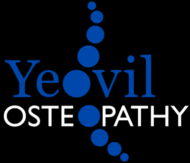About Osteopathy
About Osteopathy
Osteopathy is a holistic treatment which is focused on the person rather than the condition. We believe that mechanical imbalances give a disturbance in function and this can lead to poor health. Treatment is aimed at gently releasing and balancing areas of tension in order to restore a state of harmony and, thereby, promote self-healing.
Osteopathy is a primary health care system complimentary to other medical practices. it has been practiced in this country for more than 100 years and is now a well recognized discipline accepted by the NHS.
Osteopathic treatment improves the mechanics of the body but a core principle is that no part of the body works in isolation; a good mechanical framework of bones, ligaments, muscles and joints affects blood supply and nerve supply to internal organs and, for this reason, patients often report improvements in many areas of their health beyond the obvious joint pain, headaches etc.
Health should be a state of harmony and balance, not just the absence of pain. The body has a natural self correcting, self healing intelligence. Osteopathic treatment aims to remove restrictions which prevent the expression of this self regulation. The Advertising Standards Agency will only allow us to mention conditions where efficacy has been demonstrated by large scale clinical trials: for many conditions the data just doesn’t exist.
Please feel free to contact us if you wish to find out whether we feel that osteopathy may help you.
‘Cranial’ osteopathy
Cranial technique is a refined and subtle type of osteopathic treatment that encourages release of stresses and strains throughout the whole body, but also including the head.
Subtle rhythmical shape change in ALL tissues was first described in the early 1900’s by Willian G Sutherland. Laboratory tests in the 1960’s and 70’s confirmed them. This involuntary motion is easily disturbed by trauma, illness, emotional shock and can be an insight into the underlying health of the body. Osteopaths trained in cranial technique learn to register and support these very subtle waves of motion.
In adults, cranial technique may be used to ease a variety of problems including pain in the head and face, whiplash, fatigue and general ill health. In babies it is especially effective in helping them to relax and reduced unsettled irritable behavior and crying.
For more information from the Sutherland Society visit www.cranial.co.uk/cranial-osteopathy/
